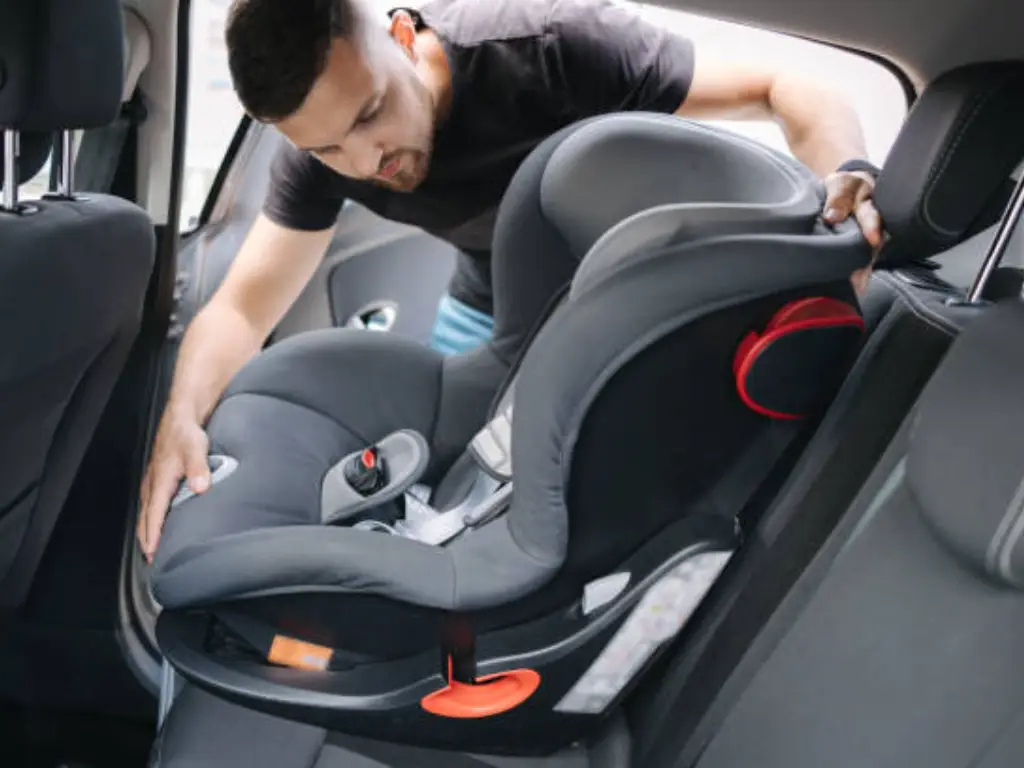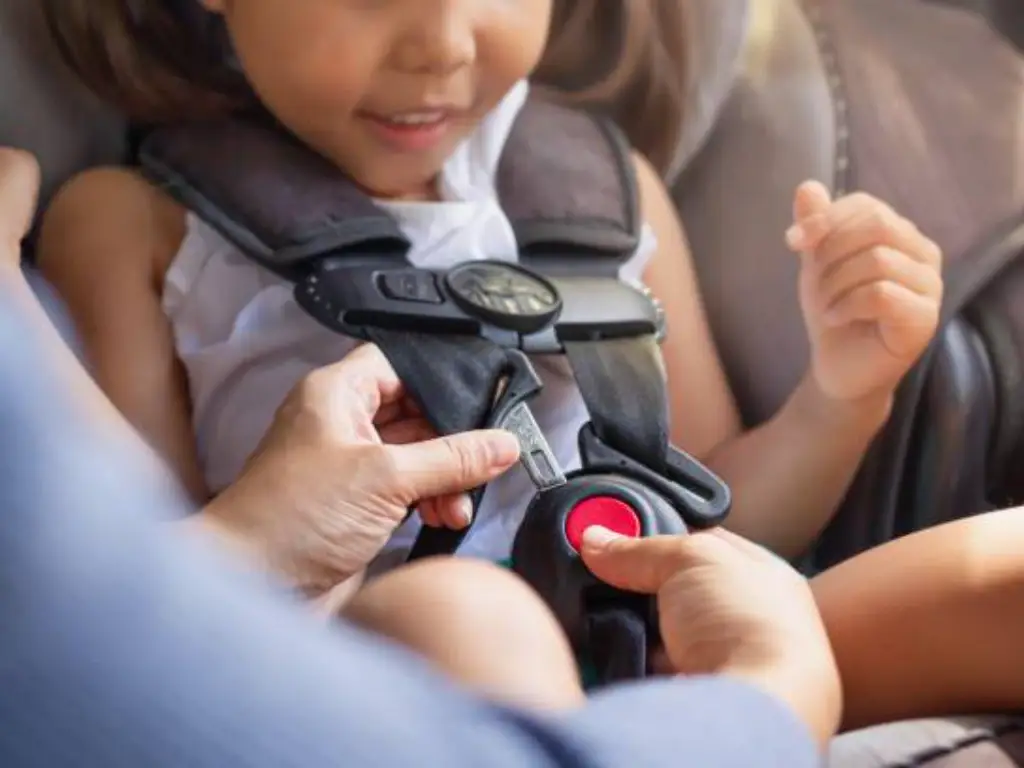Introduction to Infant Car Seat Safety
The cocoon of life starts small, snug, and secure—a perfect metaphor for your infant’s car seat, the first cradle on wheels that every newborn knows. In my decades of experience, I’ve seen the evolution of car seat safety, something I never take lightly. Each year, tragically, lives are cut short in car accidents, yet with proper precautions, such as a correctly installed infant car seat, many of these tiny passengers survive without a scratch.
For parents, it’s the first line of defense. The Centers for Disease Control and Prevention (CDC) highlight the critical nature of car seats, stating that car seat use reduces the risk for injury in crashes by 71–82% for children, compared with seat belt use alone. (https://www.cdc.gov/injury/features/child-passenger-safety/) It’s not just a device; it’s your baby’s guardian on the road.
But let’s not get bogged down in statistics. Instead, let’s start with a heartfelt truth—it’s all about keeping that little bundle safe, sound, and smiling in the back seat. That’s a feeling every parent knows, right down to their core.

Understanding Car Seat Types
Diving into the world of car seats can initially feel like navigating treacherous waters. However, get to know the different vessels available—infant car seats, booster seats, convertible seats—and the sea becomes less intimidating.
An infant car seat is designed explicitly with the tiniest passengers in mind, typically suitable up until your baby reaches the seat’s weight limit or height limit, as specified by the car seat manufacturer. Passport to infancy’s road trips, these seats relay heavily on the restraint system, which usually includes a five-point harness.
Let me take you on a brief journey through each type. Booster seats? Ideal for the older child, they bridge the gap until the vehicle’s seat belt fits them properly. Convertible seats? They grow with your child, starting rear-facing—yes, the safest place for the youngest passengers—and can be turned front-facing as they get older, typically around the age of two or when they exceed the rear-facing weight limit.
How does rear-facing vs. front-facing impact safety?
When you’re choosing a car seat, the orientation is as crucial as the anchor point used for a ship in a storm. Rear-facing, often a subject of debate for the uninitiated parent, is the American Academy of Pediatrics golden standard, recommended to be used as long as possible. Why? Rear-facing seats support the head, neck, and spine of infants and toddlers more effectively during sudden stops or collisions.
Front-facing seats invite older children to the world outside the window, but safety must never take a back seat. A common misconception is that kids are ready to face forward once their little legs can no longer stretch out straight. Not so, my friends. It’s about the weight and height, not comfort—this isn’t a limousine ride; it’s a life-preserving seat configuration.
We’ll revisit and delve deeper into these angles later on, but let’s turn our attention now to the specifics of installation.
Before You Begin: Tools and Materials Needed
Like any experienced craftsman knows, you need the right tools for the job. Fortunately, when it comes to car seat installation, these “tools” are usually already at your disposal. First thing’s first: locate your car seat manual and your vehicle manual. These two pieces of literature are your best friends in this installation journey.
You might need a locking clip (supplied with most car seats), sometimes necessary if your car doesn’t have LATCH system compatibility. And have you ever noticed those small, seemingly decorative loops in your car’s back seat, typically located at the junction between the seat’s back and bottom? Those are your cargo hooks, anchoring points for the seat.
Before diving into the detailed steps of installation, let’s take a quick glance at this handy reference table, summarizing key aspects of different car seat types, their installation methods, and crucial safety tips, to give you an overview and prepare you for the installation process ahead:
| Car Seat Type | Age/Weight Range | Installation Method | Key Safety Tips |
| Infant Car Seat | Newborn to weight/height limit | Seat Belt/LATCH | Always rear-facing, harness snug and level with armpits |
| Convertible Car Seat | Newborn to 65+ lbs | Seat Belt/LATCH | Start rear-facing, switch to front-facing as per weight/height guidelines |
| Booster Seat | Over 40 lbs and 4+ years old | Seat Belt | Use when child outgrows front-facing seat, ensure seat belt fits properly across lap and shoulder |
| All-in-One Car Seat | Newborn to 120 lbs | Seat Belt/LATCH | Adjustable for rear-facing, front-facing, and booster mode as child grows |

Step-by-Step Guide to Installing an Infant Car Seat
You’ve gathered your manuals and tools; it’s time to embark on the installation.
Step 1: Reading the Car Seat Manual
A manual might not be a thrilling read, but it’s your script for safety. Every car seat is unique, like a fingerprint, and each has a specific belt path for the seat belt or LATCH system to follow. The car seat manual holds the key to understanding these paths and ensuring you start on the right foot.
Step 2: Positioning the Car Seat in Your Vehicle
Automobile soil has different terrains, and you want to plant your car seat where it can flourish—metaphorically speaking. The center seat is often considered the safest spot due to its distance from potential intrusion during a car accident. However, not all center seats provide the proper anchor points and may not always be the most feasible option.
Rear-facing is always the baseline where we start. It is here, in the cocoon of the back seat, that your infant is most protected. With the angle of the seat and the support it provides, we’re engineering a safer travel experience for the most precious cargo.
Step 3: Installing with a Seat Belt
Car seat installation might not be rocket science, but you need to pay close attention to detail as if it were. Follow the car seat manual to thread the seat belt through the correct belt path, ensuring it’s not twisted. Some manuals use diagrams to show the exact routing—which, while simple, are as vital as a blueprint in construction work.
Step 4: Installing with Lower Anchors (LATCH System)
Locating LATCH anchors might feel like seeking hidden treasure; they’re not always visible at first glance. Once you’ve located them, you’re halfway to your destination—secure installation.
Clicking in the LATCH connectors might be as satisfying as snapping together a child’s building blocks, but with exponentially higher stakes. Make sure they’re firmly attached and that the base of the car seat is as unmoving as a steadfast boulder.
Step 5: Ensuring Correct Recline Angle
Many bases come with built-in angle adjusters, or you might need to use a rolled towel or a pool noodle to achieve the correct angle, which is crucial for keeping your infant’s head from flopping forward.
Modern car seats often boast level indicators—these aren’t just fancy gadgets; they are your level-headed friends, ensuring your seat is angled just right for a peaceful journey.
Step 6: Securing the Base
Check if there is more than an inch of movement at the base by giving it a good solid tug. A secure base will hardly budge. If it moves more—back to the manual you go, to troubleshoot.
Step 7: Attaching the Infant Carrier to the Base
This step is like clicking the last piece of a puzzle in place. You’ll often hear a clear click when the carrier attaches securely to the base. That sound? It’s the click of confidence.
Step 8: Adjusting the Harness System
The harness system is the snug embrace that keeps your baby secure. The chest clip should align with the armpit level. Not below, not above—right at the pit, securing that tiny treasure with the gentle touch of expertise.

Additional Safety Checks
Checking Strap Tightness
The pinch test is a mother’s instinct turned technique. If you can pinch a fold on the shoulder strap, it’s too loose. The harness should hug your baby with the warmth of a down quilt—just snug enough to be comfortable without pressing too hard.
Final Inspection Checklist
Everything should now be in place, firmly secured, and ready for inspection. The belt paths, the clips, the angle—these are your checkboxes. Double-checking, perhaps even triple-checking, is how expertise shows its true value.
Can I Install an Infant Car Seat in a Two-Door Car?
For those of you with a cozier vehicle, the riddle remains: can the nest of safety be securely built in a two-door car? The answer is less about the number of doors and more about the proper space and anchor points. While it may be more challenging, carefully following the car seat installation steps can lead to a safe outcome, even in this compact scenario.
Common Installation Mistakes to Avoid
Incorrect Belt Routing
It’s easy to thread a seat belt through the wrong slot, but this can lead to significant errors in security. Always ensure you’re weaving the path of safety the right way—through the designated belt path.
Loose Installation
A car seat that moves side to side or front to back more than an inch can undermine the safety it’s designed to provide. Ensure the base is anchored securely, so your child’s first rides are as safe as they are memorable.
Tips for Maintaining Car Seat Safety
Regular Inspection and Adjustment
As the seasons change, so does your child, growing and needing adjustments to their car seat fit. Regular checks and tweaks are necessities, not luxuries. Safe Kids Worldwide advocates for regular check-ups to ensure everything stays on point.
Cleaning and Care of the Car Seat
A car seat should be treated as another space your child inhabits—keeping it clean and in good order isn’t about aesthetics; it’s part of safety. Remove any bulky clothing from your child before buckling them into their seat, as it can prevent a snug fit and become a hazard in itself.

When to Transition to a New Car Seat
Just like watching your child graduate from one grade to the next, there comes a time to transition them to a new car seat. Whether they’ve shot up in height, bulked out in weight, or simply aged out, it’s essential to know the signs that it’s time for a change. Reference your car seat manual and the guidelines set out by establishments like the American Academy of Pediatrics to guide your decision-making.
Conclusion
As we wrap up this step-by-step tutorial on how to install infant car seat safely, remember that this isn’t just an exercise in following instructions—it’s an act of love, protection, and responsibility. From selecting the safest place in your vehicle to understanding the angles and proper strap adjustments, every detail matters. It’s more than just a seat; it’s a statement that claims ‘Herein lies my world’.
Nothing is more rewarding than that little sigh of contentment from the back seat, the silent testimony of a job well done, as you glide onto the freeway under the watchful eyes of the National Highway Traffic Safety Administration’s highest standards. And isn’t that what it’s all about? That harmonious blend of love and diligence—that’s car seat installation done right.






